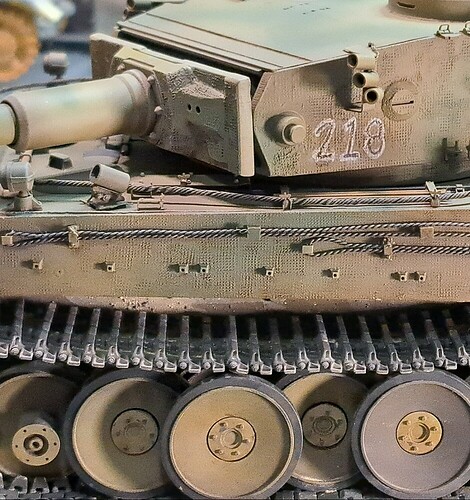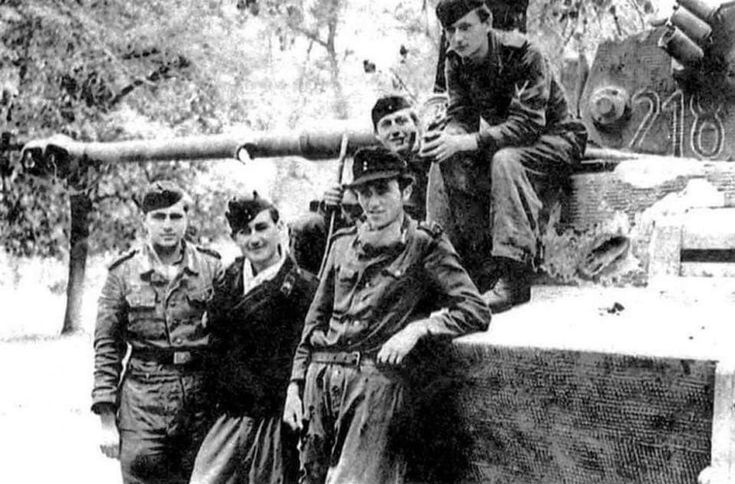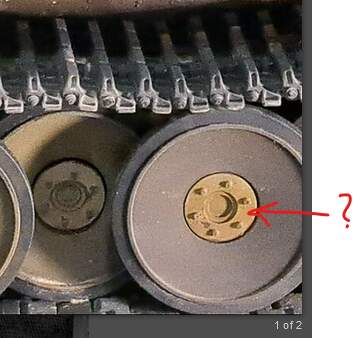@KurtLaughlin
I believe that a correct interpretation of the Research Bonus Rule lies in understanding the intent behind it. The goal of the rule is to incentivize and motivate modelers to build more accurate models, both historically and technically accurate, through the use of research to correct the kit they are using (to include scratch-building), the figure they are making, or the diorama or vignette they are creating.
It does not matter whether the corrections that were made or the additions that were created concern mechanical details, colors, markings, historical interactions or interfaces between the crews or other humans (at that time and place), details about the terrain or weather (in the context of the diorama or vignette scene depicted), or even if the subject is real or based on some fictional story myth (think WH40K, SF3D, Gundam, etc.). Research is conducted and the build is improved in some way based on that research.
All that matters is that the builder has conducted some research and then used the findings of that research to make changes to the model that make the model more accurate or correct (according to the research resource consulted). If this work has been done, then the Research Bonus Rule’s purpose is to specify the requirements for the modeler to document the research work and how it was used to change the model being judged in order to earn the bonus 1/2 point.
Neither the sum total of the amount of research done nor the totality of the changes made to the model in question are important. All that matters is that the research was done, the model was changed according to that research, and the documentation of that is presented to the judges in a manner that satisfies the only two requirements stated in the rule: there is a description of the connection between the research and the change(s) made to the model / work, and listing the references that were used.
What’s more, multiple research sources may be consulted and the as long as the specific changes to the model described are each, in their turn, connected to the relevant source, the sum or total result of the work and the completed model being judged does not have to exactly match any of the completed prototypes depicted in the various sources. That is, it is NOT required that the modeler build a SPECIFIC model of a SPECIFIC prototype depicted in any reference cited. The finished model may be a “type” example of the prototype with changes or corrections or additions made to it based on the research.
(To reiterate, no graphics, photos, diagrams, or other illustrations are REQUIRED. They MAY be submitted if that will help the modeler to describe the connection between the model, the work done to it, and the reference. However, the modeler may simply write the entire submission. The length of the submission has nothing to do with whether or not it satisfies the requirements in the rule. As long as there is a description of the work that connects the research findings to how the model was built and a list of the sources used, these requirements have been met.)
Again, neither the nature of the changes made, nor the nature of the reference sources cited have any bearing on whether or not the work is “valid” and can be considered for the bonus. In fact, it’s not even a requirement that the builder’s interpretation of the information or the work performed on the model based on the research are, themselves, even technically, historically or contextually correct, per se. That is, the Research Bonus could be awarded even if the builder has made incorrect changes to the model. (We would hope not, but the objective and goal of the rule is to encourage and motivate modelers to conduct research and use it to make better models. How accurate or correct the results are, are in themselves, neither here nor there as to whether or not the Research Bonus may be awarded.)
I have, personally, over the years submitted documentation for the Research Bonus for stand-alone models, figures, dioramas, and vignettes. These submissions have address many, many different kinds of changes, additions or creations made to or added to the works that those Research Bonus submissions concerned. Some of these Research Bonus submissions even addressed things like the weather, terrain and other historical battlefield geographic contexts around the works.
Consider also that the Research Bonus also applies to hypothetical subjects, such as those found in sci-fi and other fictional works. As long as the modeler can demonstrate to the judges through his or her correctly formatted Research Bonus submission that the model being judged has been changed - in any way - to better match the research findings, then he or she should be awarded the bonus. The research sources consulted need not be any sort of reality based historical or technical materials. They can be any information source that the modeler has consulted and from which he or she has learned enough to make changes or additions to the model (which are then captured and cited in the correctly formatted, i.e. the required two-part submission).
In my time as a Field Judge, ACJ, and CJ at AMPS shows, both regional and national, I have even seen Research Bonus submissions that documented ORIGINAL, first-person research by the modeler. That is, submissions in which the modeler cited his own, in-person research as the source of the information used to make the described changes to the model being judged.
“The look” is only one of many ways to interpret the nature of the changes or additions made to the model through the use of research. Of course, one might say that since scale modeling is almost entirely a visual art, that “the look” covers everything. However, I would submit that there are times when the research could provide information that has no direct bearing on “the look” but which, if modeled, would be completely valid vis-a-vis the Research Bonus.
Consider a written, narrative that describes an incident involving the subject of the modeled work (people, machines, the terrain, the weather, etc.). It’s entirely possible that the entire modeled work (likely a diorama or a vignette but never say “only” or “never anything else” - creativity will come 'round to make you eat your words) could be based on this narrative taken from a research source. If correctly formatted, the Research Bonus submission for it would satisfy the requirement for award of the bonus.
Finally, I would agree with you that an OOB build could earn the bonus if, as an example, the modeler researched and confirmed that, say, the kit decals and paint scheme in the instructions were correct and then provided a properly formatted Research Bonus submission with the model. This example demonstrates and emphasizes that the Research Bonus rule is about RESEARCH first and not necessarily about the quality of the model work. Here, the modeler earns the bonus for nothing more than doing and properly documenting the research.
![]() percent what I need so it can be concise and easier to read and understand.
percent what I need so it can be concise and easier to read and understand.

